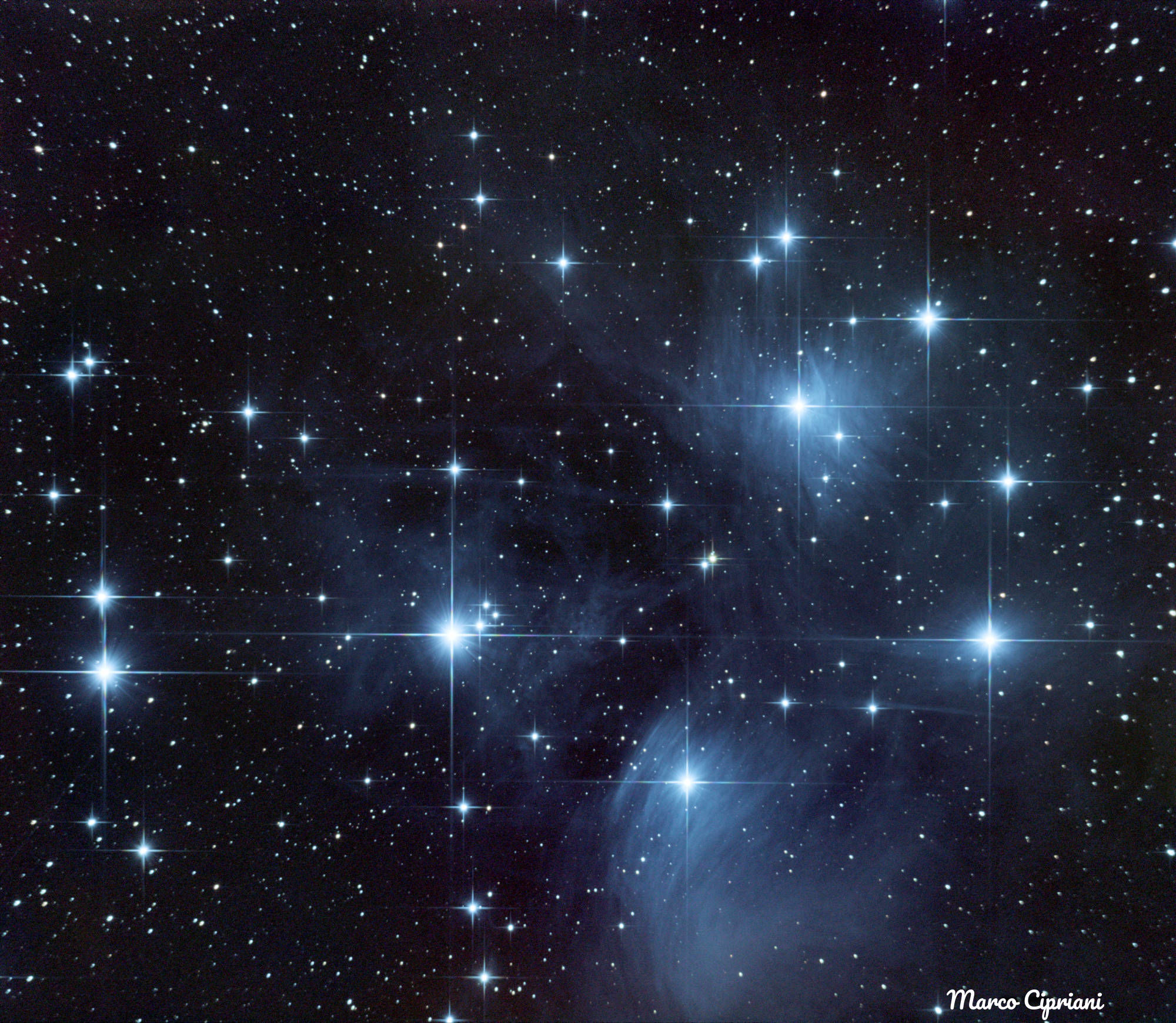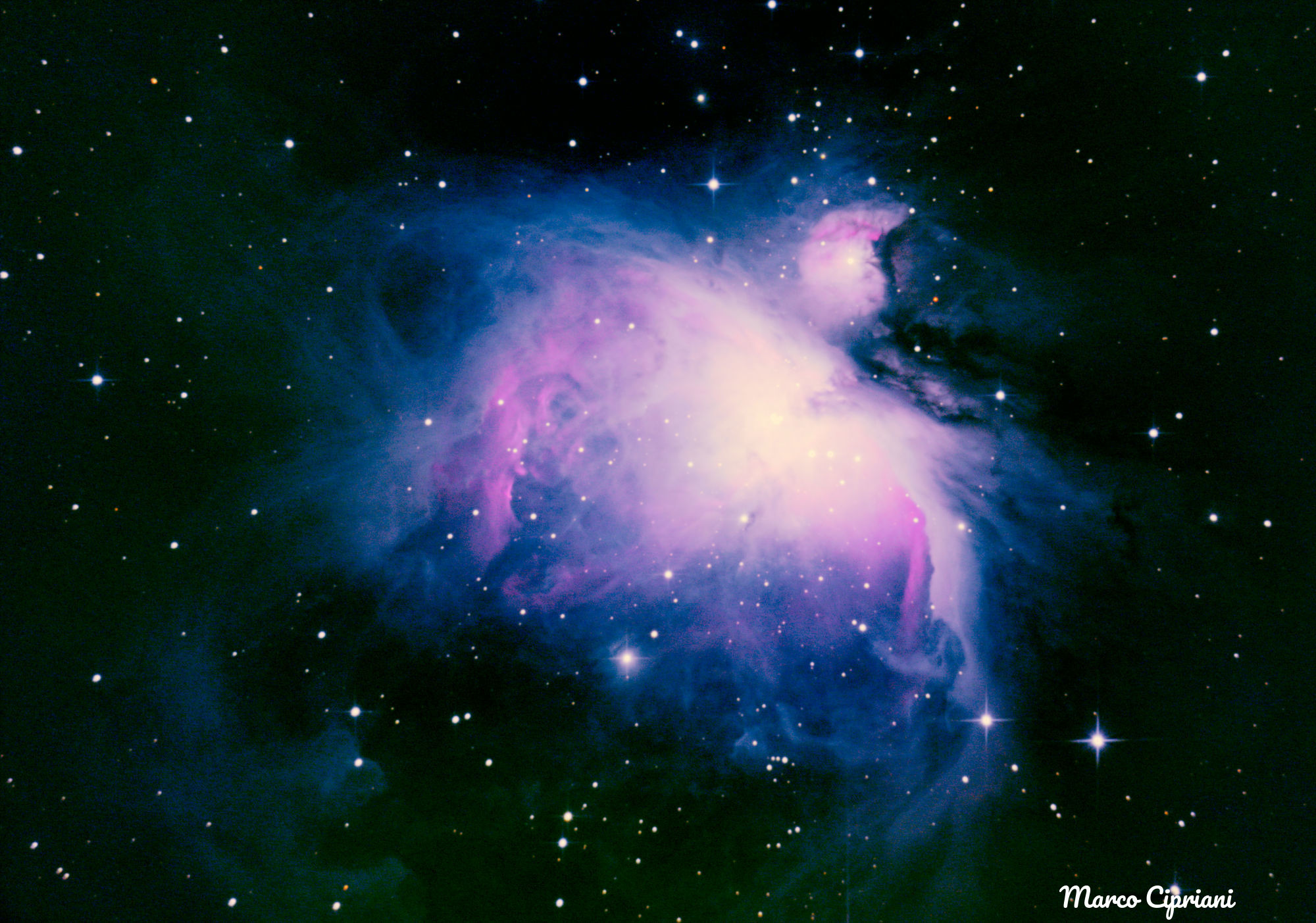The Pleiades and the Orion Nebula
Astrophotography, Nebulae, Sky-Watcher Newton 200 ·The Great Orion Nebula and the Pleiades: when the UHC filter must be used. I’m happy with the photo I took to M 45, but I’m also disappointed by the colour balance and the contrasts of the Orion Nebula: I didn’t use the light pollution filter this time…


Pleiades photo, Orion nebula photo
The Pleiades
Also known as the Seven Sisters (named for the Seven Sisters of Greek mythology: Sterope, Merope, Electra, Maia, Taygeta, Celaeno, and Alcyone, along with their parents Atlas and Pleione) or M45, the Pleiades is an open star cluster in the constellation of Taurus. It’s visible to the naked eye, even from a light polluted area like mine and it’s the closest star cluster to Earth (444 light-years). It’s dominated by hot blue bright stars that have formed within the last 100 million years, while the reflection nebulae around them are made of dust clouds in the interstellar medium (blue nebulae are always reflection one). Galileo Galilei was the first astronomer to view the Pleiades through a telescope and discovered that the cluster contains many stars too dim to be seen with the naked eye. He published his observations, including a sketch of the Pleiades showing 36 stars, in his treatise Sidereus Nuncius in March 1610.
The photo
24 frames, 280 seconds ISO 200 per photo, processing in Astro Pixel Processor and GIMP. Calibration frames: 14 darks, flats, dark flat and offset frames. Average stacking, stretch, curves and noise reduction: just a few steps to keep the noise-to-ration as low as possible.
The Orion Nebula
M 42 is a diffuse nebula located south of Orion’s Belt in the “sword” of Orion. This fascinating star formation region is 1344 light-years away, so the closest one to Earth! It is also one of the most photographed and studied object of the night sky (the Hubble Space Telescope photographed it with every camera it has!).
The photo
I’m quite disappointed by this photo: I wasn’t able to successfully balance the colours (in particular, the red channel) and the contrasts in the core of the nebula. Last time I photographed it I took one single shot with my PrimaLuceLab UHC filter (Ultra High Contrast light pollution broadband filter) and the result was better than this sequence of 39 photos: sadly, the disadvantages of living in a light polluted area.
Sequence:
- 15x 120s ISO100
- 5x 240s ISO100
- 6x 30s ISO100
- 13x 60s ISO100
Dark, flat and bias frames. Processing in Astro Pixel Processor and The GIMP.
